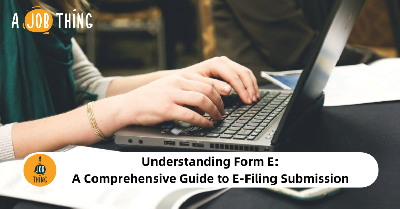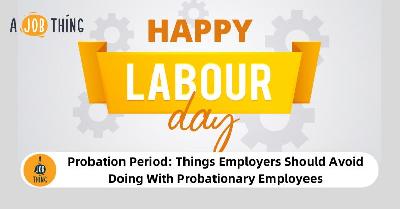
The Differences Between Verbal and Written Warning
Create Job Description Using AI
Write appealing job descriptions for any job opening to attract the most qualifield and suitable candidates. FOR FREE.
try now
At first glance, the distinction between verbal and written warnings may appear rather obvious. Verbal and written warnings, especially in a legal context, depict the phases of formal disciplinary or corrective measures.
For those unfamiliar with the words, verbal and written warnings exist primarily within a company's disciplinary regulations, and most organisations issue such warnings as part of a remedial procedure.
Traditionally, the phrases refer to a series of actions taken to reprimand or correct an employee's behaviour at work. These procedures include verbal and written warnings and suspension or termination.
However, this article focuses only on verbal and written warnings, which differ in that a vocal warning comes before a written warning.
Furthermore, while most organisations faithfully adhere to these steps of disciplinary action, others may carry out such measures a bit differently.
Verbal Warning: What is it?
A verbal warning is given to an employee by their management or supervisor regarding disciplinary or performance issues. It is usually given during a discussion between the supervisor and the employee.
The first stage in the corrective procedure is a verbal warning. The goal of such a warning is to alert the worker of their performance or behaviour, allowing for improvement.
This could be a violation of the company's rules and standards, the conduct of minor offences such as frequent absenteeism, or even subpar work performance.
The supervisor or management must follow a fair method when issuing a verbal warning. The process for delivering a verbal warning may change from one company to the next.
In general, the HR department should take specific steps, such as:
-
Issuing the warning privately,
-
Stating the problem precisely and allowing the employee to explain their side,
-
Clearly stating the expected performance and standards of the employee, and lastly,
-
They were documenting the interaction during which they gave the verbal warning.
This verbal warning must be documented and usually includes the employee's name, the warning date, the issue, and the intended outcome.
A documented verbal warning serves as an informal record of the warning and is kept in the employee's file. The ultimate goal of a verbal warning is to provide the employee with another chance to change their behaviour or performance. It's like getting a second chance.
Written Warning: What is it?
A written warning is simply a warning that is provided in writing. Traditionally, it is described as a letter written to a worker. This kind of letter highlights the issues with their performance or behaviour and details the repercussions if such conduct or performance is not addressed or remedied within a specific time frame.
A written warning is the second remedial and disciplinary action procedure stage. A written warning usually follows a verbal warning.
Thus, the employee has previously received a verbal warning, and failure to modify or address the problem behaviour results in a written warning. As a result, a written warning is more severe than a verbal warning.
Organisations issue a written warning when a verbal warning has failed to correct an issue, or the employee has committed the same offence or violation more than once.
Written warnings are frequently issued in the circumstances involving absenteeism, offensive language, destruction of company property, poor performance, delinquency, and other offences such as aggression or drug use.
Usually, the employee must sign the written warning letter, and a copy of the same is stored on the employee's record and submitted to the HR department.
How do verbal and written warnings differ from one another?
Verbal and written warnings are defined as follows:
-
A verbal warning is a warning delivered to an employee by a supervisor or manager over a problem with the employee's behaviour or work performance.
-
A written warning is a letter the employer delivers detailing the problem with the employee's conduct or performance and the repercussions if it is not corrected.
The medium of the warning
-
A verbal warning is given vocally.
-
A written warning is given in writing.
When should the warning be given?
-
If there is a disciplinary or performance issue, a verbal warning is provided initially.
-
Following a verbal warning, a written warning is provided if the employee fails to modify their actions, notwithstanding the spoken warning.
The aim of the warning
-
The goal of a verbal warning is to tell the employee of a performance or behavioural concern and provide them with the opportunity to correct themselves.
-
A written warning is delivered to advise the recipient of the implications if the behaviour mentioned above or performance issue is not addressed or improved within a specified time frame.
What types of wrongdoing should the warning be given?
-
Verbal warnings are delivered in situations such as violating the company's standards or policies, committing minor offences such as persistent absenteeism, or performing a poor job.
-
Written warnings are issued in cases including absenteeism, offensive language, destruction to company property, underperformance, lack of timeliness, and others, including the conduct of crimes such as assault or drug use.






